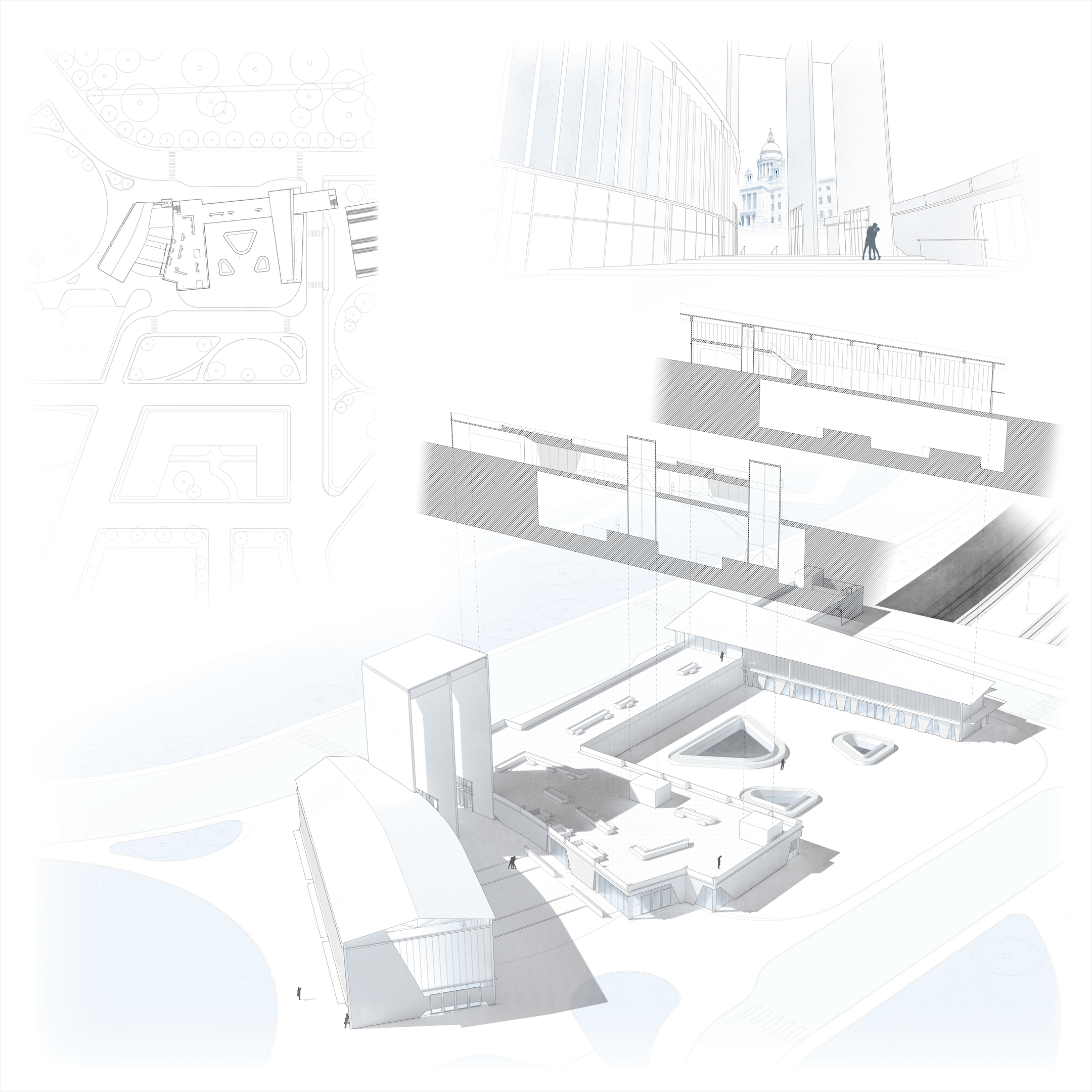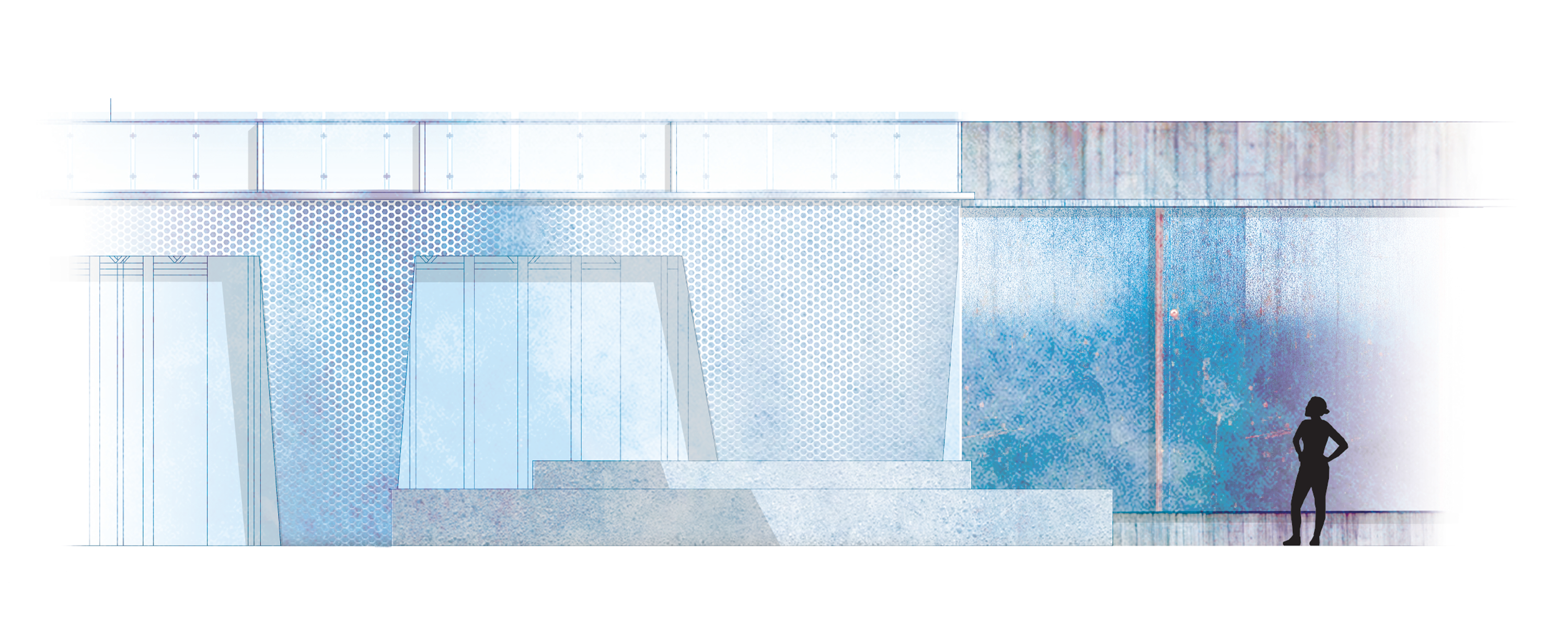PROFESSOR
MALCOLM MCCULLOUGH
STUDIO SECTION
PROVIDENCE GATEWAY
This studio interprets our studios’ shared theme of (public) Works: Fitting Out WPA 2.0 via a familiar building type that was more prominent in the time of New Deal 1.0 but is resurgent in other countries today: THE RAILWAY STATION.
This studio proposes to learn from but then replace a respectable but aging station on the northeast corridor Acela line, in Providence RI. Whereas major rail terminals in Europe and East Asia have become a favorite trophy building type lately, many with undulating canopies, nevertheless a smaller more sparing building can teach the design basics better. Providence Station (SOM 1983) is just that: rational, classical, brutalist, and minimalist all in one. This building was also a small catalyst for ambitious urban design: the transformation of gritty Providence into one of America’s favorite small cities. With that project now under study for expansion (although here we imagined full replacement), and with $24 billion for Acela in the recent federal Infrastructure bill, this studio studied many stations from which to propose a new one here, for a growing ridership, more diverse not only in its identities, or in its civic values, but also more diverse in its new mobilities.
MALCOLM MCCULLOUGH
Max Coolidge
Diana Huang
ZAIN ABUSEIR
Sydney Cleveland
Muzi Li
OLAIA CHIVITE AMIGO
Jonathan Liao
Evan Meek
JACOB COMERCI
Benjamin Garcia
Dominica Kusmierczyk
LAURA MARIE PETERSON
Erica Behm,
Haley Beverlin
Lauren Conroy,
Zoë Meinke
STUDENT WORK
MAX COOLIDGE
“THE GATEWAY”
In the spirit of the studio's ongoing focus on WPA, this project sought to simultaneously revitalize infrastructure and urban space in Providence, Rhode Island, via the design of a new train station. The station's program is distributed along its length in three distinct halls, all along a main axis. This decision, and the resultant spaces, ensure the piece takes a strong stand in favor of a form of civic architecture which creates dignified and welcoming public space for city-dwellers and travelers alike. The station is visually linked to the capital above it as well as the downtown and river to the south, and in mediating the relationship between the city’s governmental, financial, and natural resources it becomes a key piece of the cultural landscape.




